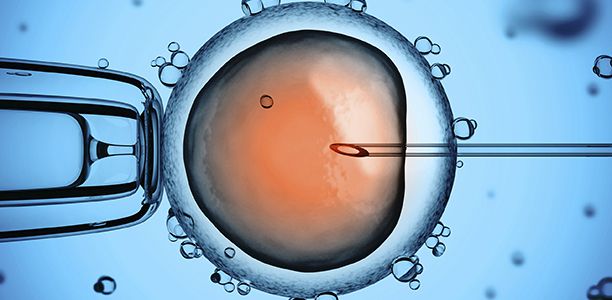The team, led by Dr David Greening from La Trobe Institute for Molecular Science and Professor Lois Salamonsen from Hudson Institute, in collaboration with experts from Monash IVF and Monash University, is working to understand why embryo implantation fails in some women and to develop new tools that could improve IVF success rates.
The National Health and Medical Research Council has awarded a $750,000 project grant to the team (2018-2020) to understand and improve the communication between an embryo and a woman’s uterus to help more people achieve a healthy pregnancy.
Dr Greening said their aim is to improve the rate of successful embryo implantations for the one in six Australian couples experiencing infertility.
“Infertility affects one in six couples in Australia and worldwide, and one in 25 pregnancies now results from artificial reproductive technologies (ART) such as IVF, which has a success rate of about 30 per cent. One reason for infertility is that embryos (fertilised eggs) fail to attach to the endometrium or lining of a woman’s uterus,” Dr Greening said.
“This Velcro-like interaction – and therefore the success of pregnancies – is the result of maternal-embryo communication governed at least in part by extracellular vesicles – little bubble like structures released by cells in the womb.
“During reproduction, these vesicles carry a signal to the embryo, resulting in the outer layer of the embryo changing so that it can successfully implant into the wall of the uterus and form a placenta. Ensuring this process of communication is working effectively will lead to more pregnancies that are successful.
“While much is already known about the embryo, the dynamic mutual communication between the embryo and the mother is not well understood – this will be greatly enhanced by this new funding.”
Dr Greening said the research team is trying to understand exactly how this process works in preclinical and human models and how to improve the success rates of IVF and natural pregnancies.
“The chances of falling pregnant through IVF has not changed much in the past 10 or 12 years. Progress has stalled compared to advances in cancer and neurodegenerative disease treatments.
“Often, assisted reproduction follows a one-size fits all approach. It clearly does not work for everyone.”
“What we are working on could be the start of personalised IVF, similar to immunotherapy in cancer, which can be tailored to an individual women’s cycle,” said Professor Salamonsen, a world expert in human uterine biology.
“Ultimately the goal would be to develop new treatments, such as stimulating existing vesicles within a woman’s body or delivering vesicles as a supplement.”
This collaborative team is also working on identifying circulating markers that could help clinicians to predict which women are most likely to experience failed embryo implantation, by detecting the quality of both the embryo, the ‘seed’, and the lining of the uterus, the ‘soil’.
“We were the first to discover these vesicles in the womb and we are world leaders in this area of research. It’s exciting to think that we could help the millions of women and couples experiencing infertility worldwide.”
(Source: La Trobe University)










